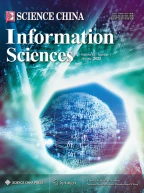Abstract
The goal of this paper is to develop a preliminary plan for a multi-nanosatellite active debris removal platform (MnADRP) for low-Earth-orbit (LEO) missions. A dynamic multi-objective traveling salesman problem (TSP) scheme is proposed in which three optimization objectives, i.e., the debris removal priority, the MnADRP orbital transfer energy, and the number of required nanosatellites are modeled respectively. A modified genetic algorithm (GA) is also proposed to solve the dynamic multi-objective TSP. Finally, numerical experiments involving partially real-world the debris data set are conducted to verify the efficacy of the proposed models and the solution method.
Similar content being viewed by others
References
Liou J C. Engineering and technology challenges for active debris removal. Progr Propul Phys, 2013, 4: 735–748
Braun V, Lüpken A, Flegel S, et al. Active debris removal of multiple priority targets. Adv Space Res, 2013, 51: 1638–1648
Bogdan U, Nayak M. A cooperative multi-satellite mission for controlled active debris removal from low Earth orbit. In: Proceedings of the Aerospace Conference, Big Sky, 2015. 1–15
Barbee B W, Alfano S, Pinon E, et al. Design of spacecraft missions to remove multiple orbital debris objects. In: Proceedings of the Aerospace Conference, Big Sky, 2011. 1–14
Liou J C. An active debris removal parametric study for LEO environment remediation. Adva Space Res, 2011, 47: 1865–1876
Liou J C, Johnson N L. Instability of the present LEO satellite populations. Adv Space Res, 2008, 41: 1046–1053
Izzo D, Getzner I, Hennes D, et al. Evolving solutions to TSP variants for active space debris removal. In: Proceedings of the Annual Conference on Genetic and Evolutionary Computation, Madrid, 2015. 1207–1214
Cerf M. Multiple space debris collecting mission: optimal mission planning. J Optimiz Theory App, 2015, 167: 195–218
Yu J, Chen X Q, Chen L H. Optimal planning of LEO active debris removal based on hybrid optimal control theory. Adv Space Res, 2015, 55: 2628–2640
Madakat D, Morio J, Vanderpooten D. Biobjective planning of an active debris removal mission. Acta Astronaut, 2013, 84: 182–188
Bérend N, Olive X. Bi-objective optimization of a multiple-target active debris removal mission. Acta Astronaut, 2016, 122: 324–335
Jing Y, Chen X Q, Chen L H. Biobjective planning of GEO debris removal mission with multiple servicing spacecrafts. Acta Astronautica, 2014, 105: 311–320
Nations U. Technical Report on Space Debris. 1999
Mehrholz D, Leushacke L, Flury W, et al. Detecting, tracking and imaging space debris. ESA Bull, 2002, 40: 128–134
Cerf M. Multiple space debris collecting mission-debris selection and trajectory optimization. J Optimiz Theory App, 2013, 156: 761–796
Martin T, Pérot E, Desjean M C, et al. Active debris removal mission design in low Earth orbit. Progr Propul Phys, 2013, 4: 763–788
Chobotov V A. Orbital Mechanics. 2nd ed. Oxford: Oxford University Press, 2002. 87–115
Stuart J, Howell K, Wilson R. Application of multi-agent coordination methods to the design of space debris mitigation tours. Adv Space Res, 2015, 57: 1680–1697
Hokamoto S. Genetic-algorithm-based rendezvous trajectory design for multiple active debris removal. In: Proceedings of the International Symposium on Space Technology and Science, Okinawa, 2011
Li C M. Optimization Method. 1st ed. Nanjing: Southeast University Press, 2009
Braun V, Lüpken A, Flegel S, et al. Active debris removal of multiple priority targets. Adv Space Res, 2013, 51: 1638–1648
Thomas S. Properties of the high area-to-mass ratio space debris population at high altitudes. Adv Space Res, 2008, 41: 1039–1045
Acknowledgments
This work was supported by National Science Foundation of China (Grant Nos. 61503304, 61374162), Fundamental Research Funds for the Central Universities (Grant No. 3102015ZY048).
Author information
Authors and Affiliations
Corresponding author
Rights and permissions
About this article
Cite this article
Liu, Y., Yang, J., Wang, Y. et al. Multi-objective optimal preliminary planning of multi-debris active removal mission in LEO. Sci. China Inf. Sci. 60, 072202 (2017). https://doi.org/10.1007/s11432-016-0566-7
Received:
Accepted:
Published:
DOI: https://doi.org/10.1007/s11432-016-0566-7

